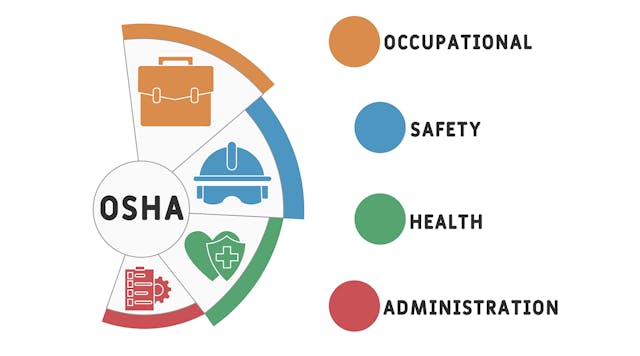ANALYSIS
If allowed to stand by the courts, a rulemaking issued recently by the Occupational Safety and Health Administration (OSHA) will require employers to expose their reported accident illness and report data on the Internet, making it available to union organizers, personal injury lawyers, and their competitors.
Scheduled to largely take effect on Jan. 1, 2024, It applies to employers with 100 or more workers in industries the agency defines as “high hazard,” although the list of these industries that OSHA provides appears to cover very nearly every employer in America today. Employer attorneys advise covered organizations to begin preparing now for next year’s reporting requirements.
Under the rule, these employers must electronically submit information from their Form 300-Log of Work-Related Injuries and Illnesses, and Form 301-Injury and Illness Incident Report to OSHA once a year. Businesses in named high-hazard industries that have 20 or more employees are still required each year to submit electronically their OSHA Form 300A Summary of Work-Related Injuries and Illnesses.
“To improve data quality, establishments are required to include their legal company name when making electronic submissions to OSHA from their injury and illness records,” states the agency’s news release announcing the rule. “OSHA will publish some of the data collected on its website to allow employers, employees, potential employees, employee representatives, current and potential customers, researchers and the general public to use information about a company's workplace safety and health record to make informed decisions,” it adds. “OSHA believes that providing public access to the data will ultimately reduce occupational injuries and illnesses.”
OSHA’s top administrator Doug Parker explained, “Congress intended for the Occupational Safety and Health Act to include reporting procedures that would provide the agency and the public with an understanding of the safety and health problems workers face, and this rule is a big step in finally realizing that objective.”
Employers emphatically disagreed when a similar rule was finalized in the waning days of the Obama Administration in 2016. It was challenged in court but was later withdrawn by OSHA after President Trump took office and installed new leadership at the Department of Labor (OSHA’s parent federal agency).
“With the new online availability of these records, employees, former employees and their representatives will be able to review your recordkeeping decisions by directly accessing the OSHA website without involving you,” explain attorneys who work for firm of Constangy Brooks Smith & Prophete.
They also note that this new process will make it much easier for OSHA to more quickly and efficiently focus in on and select certain employers and industry segments to become targets for special emphasis enforcement programs, like the one recently announced for the warehousing industry.
Cost Issues Are Raised
Another complaint raised in the legal challenges that were brought against the agency that could be resurrected this time around is the enormous cost to employers of adhering to the new rules, a subject remarked on by legal analysts as well.
“The cost and resources necessary to implement electronic data collection and maintenance will be significant. OSHA’s financial estimates may not account for the time and effort required to bring an employer into compliance, especially ones without any electronic collection procedures currently in place,” observe attorneys for the law firm of Morgan, Lewis & Bockius.
They say that the OSHA recordkeeping process has always allowed employers the continuing opportunity to revise injury and illness records with new changes as time goes by, “but once the injury and illness data are initially reported and disclosed, it may be difficult for employers to revise this public information. The records can also reveal proprietary information, such as the number of workers at a facility, and their publication may create a chilling effect because the data may be misinterpreted or misrepresented by the media or competitors.”
In the final rule, OSHA argues that there is little or no expectation of privacy in records that are required by law to be kept and made readily available. “Although OSHA states that it will use software to remove private employee information from the disclosures before posting, the effectiveness of this software remains to be seen,” point out attorneys J. Micah Dickie and Sharon Suh of the Fisher Phillips law firm.
In addition, the expansion of the regulation to cover establishments with 100 or more employees could be used to identify injuries and illnesses for individual workers at certain facilities, and thereby reveal the specific workers’ medical information, violating their privacy, the Morgan, Lewis & Bockius attorneys warn. They say that this same information also could easily be exploited by competitors.
One thing the attorneys who have looked at the rule seem to agree on is that employers need to start preparing now, long before the rule goes into effect on New Year’s Day 2024. That includes making sure that all of your recordkeeping is kept up to date. As a result, you need to be sure to evaluate each incident of injury or illness to ensure that the OSHA standards actually require you to record this kind of information and make an effort to avoid recording any extraneous details, Dickie and Suh advise.
The new rule does not change the current requirement for establishments with 250 or more employees that are not in a designated industry to electronically submit information from their Form 300A to OSHA annually, they point out. This means large employers in what are considered to be non-hazardous industries will still have to submit such data which will then be made public (unless you fall under an exemption to the rule).
Also keep in mind that if you do business in a state where a state agency rather than federal OSHA enforces the Occupational Safety and Health Act (such as California, Kentucky and 24 other states), recordkeeping requirements may differ.
Finally, employers should review their injury and illness reporting procedures to ensure that such programs are reasonable and do not end up discouraging employees from reporting incidents of injury and illness, warn the Morgan, Lewis & Bockius attorneys.















































































